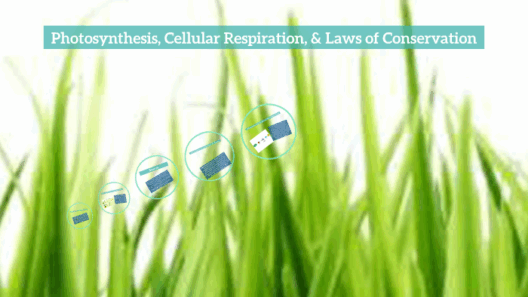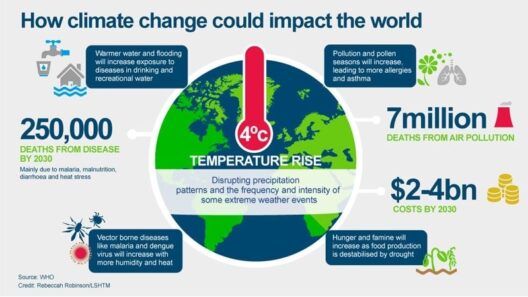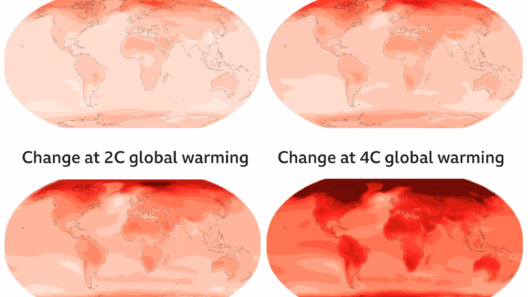Imagine, for a moment, an enormous tapestry woven from countless threads, with each thread representing the individual actions of people from all corners of the globe. This tapestry is our planet, and the vibrant colors that stitch it together symbolize the impacts of our choices. Each thread contributes to the integrity of the fabric, yet many of us overlook the significance of our role in preserving its beauty. As global warming escalates and climate change manifests in increasingly devastating ways, the question arises: how can the average person—an everyday weaver—reduce their carbon footprint and combat this pressing crisis?
The journey towards a more sustainable existence begins at home. Energy consumption is one of the most significant contributors to carbon emissions. Consider switching from traditional incandescent bulbs to energy-efficient LED lights. This seemingly small change is akin to swapping out rusty old tools for sharp new ones in a craftsman’s toolbox. Not only do LEDs consume up to 80% less energy, but they also last significantly longer, reducing the number of bulbs we dispose of each year and ultimately mitigating waste.
Furthermore, ensure that your home is adequately insulated; this is similar to wrapping a beloved item in a protective layer. Proper insulation keeps heat in during the winter and cool air in during the summer, reducing the need for heating and cooling systems that guzzle energy. Investing in double-glazed windows, sealing gaps, and using thermal curtains can dramatically lower your energy consumption—and, quite importantly, your bills.
Transportation is another pivotal aspect of our carbon footprint. The average person’s reliance on cars for daily commuting is akin to carrying an elephant through a forest—the weight of that practice can trample the environment. Transitioning to public transport, cycling, or walking helps alleviate this burden. If you must drive, consider carpooling, which is not just a cost-effective strategy; it’s a communal effort to share the load. Alternatively, hybrid or electric vehicles minimize emissions, symbolizing a bridge between the past and the future of transportation.
Food production is an often-overlooked component of carbon emissions. Much like the roots of a tree, the choices we make at the grocery store dig deep into the soil of environmental impact. A diet rich in plant-based foods requires significantly less energy to produce than meat-based diets. Reducing meat consumption, even if only by a few meals per week, can yield substantial environmental benefits. Additionally, prioritizing locally sourced products minimizes the carbon emissions associated with transportation and supports local economies.
To delve deeper into this topic, explore the realm of composting. By transforming kitchen scraps and yard waste into nutrient-rich compost, you engage in a circular economy, akin to the natural cycles of the earth. This process not only reduces the volume of waste that ends up in landfills—a significant source of methane—but also enriches soil, encouraging the growth of your own food. It is a microcosm of sustainability, promoting an intimate relationship with our earth.
Water conservation also plays a crucial role in the battle against climate change. Water treatment and distribution systems are energy-intensive and, when we waste water, we exacerbate the demand for that energy. Simple actions, such as fixing leaks, taking shorter showers, and using water-efficient appliances, act like fine brush strokes, painting a more sustainable future for our planet.
Another area where individual action can shine is in waste management. In the grand mosaic of climate action, reducing, reusing, and recycling are not just cliché slogans; they are tried and true methods to mitigate our impact. Carry reusable bags, bottles, and containers. Participate in local recycling programs. Embrace the philosophy of minimalism and be conscious of what you purchase. Each conscious decision is a brushstroke in the mural of a better world.
Community engagement is a powerful tool in reducing carbon footprints collectively. Think of your local community as a team of artisans, each contributing their expertise to create a masterpiece. Volunteer for local environmental initiatives, attend town hall meetings, and advocate for policies that favor sustainability. By uniting for a common cause, individuals amplify their voices, driving change on a larger scale.
Education is a fundamental component of sustainability. Empowering oneself with knowledge about ecological principles fosters a deeper connection to the environment. This could translate into discussing climate action with friends and family, much like passing down cherished stories through generations. Use social media as a platform to spread awareness, advocate for sustainable practices, and inspire others to join the movement. The ripple effect of educating others paves the path to creating a more conscious society.
The concept of carbon offsetting is another innovative approach for those who wish to take additional steps. By investing in renewable energy projects or reforestation initiatives, individuals can counterbalance their emissions, much like planting a tree to replace one that has been cut down. This not only contributes to the restoration of ecosystems but also cultivates a sense of responsibility and stewardship over our shared environment.
Ultimately, while the enormity of climate change can feel akin to a monolithic mountain looming before us, every action taken by an individual is a step towards scaling that mountain. By making conscious decisions and adopting sustainable practices, the average person can become a vital contributor to the larger effort against global warming. Together, we can weave a stronger, more resilient tapestry—one that embodies a commitment to protecting the exquisite planet we call home.







